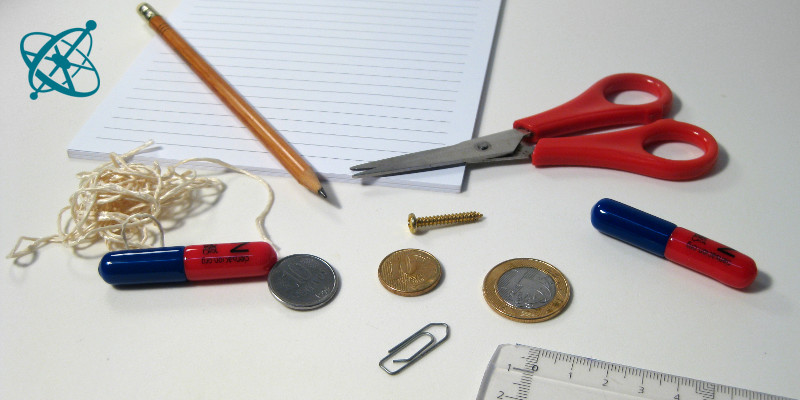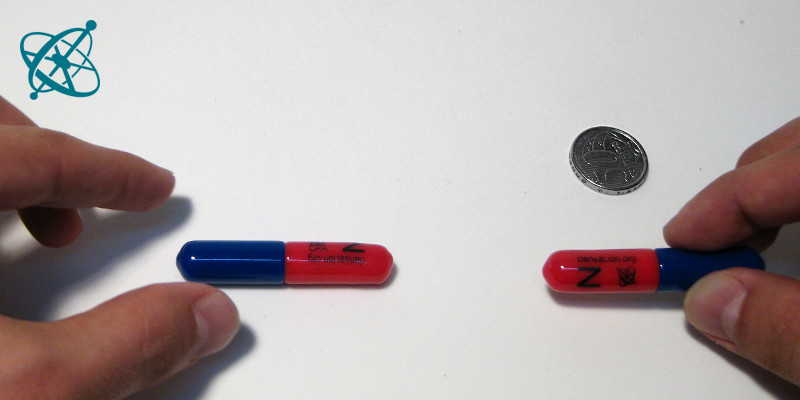 www.sciensation.org | Ciênsação hands-on experiments are published as Open Educational resources under a Creative Commons Attribution-ShareAlike 4.0 International License.
www.sciensation.org | Ciênsação hands-on experiments are published as Open Educational resources under a Creative Commons Attribution-ShareAlike 4.0 International License.
What kind of things are attracted to a magnet?

Are the two ends of a magnet different?
Magnetism
Let your students playfully gain a feeling for the invisible and 'magic' force called magnetism. After freely experimenting to see what is attracted to a magnet and what not, let them ponder the question what distinguishes the two ends of a magnet, i.e. its poles.
Gain a feeling for magnetism.
Recognizing ferromagnetic materials.
Analyzing the differences and similarities of the magnetic north and south pole.
1. What is attracted by a magnet, and what not?
2. Are the two ends of a magnet different?
On what does it depend wether an object is attracted to a magnet or not?
› The material it is made of.
Are things stronger attracted to one end of the magnet than to the other?
› For most things it does not make a difference, but for the force between magnets it makes a big difference.
Students will note that most, but not all, metallic objects are attracted to magnets, while plastic, wood and glass are not. In some cases you might need to clarify what materials things are really made of, e.g. in the case of plastic made to look like metal.
The question to make out the difference between the two ends of a magnet can be challenging. Both sides act identical towards anything but other magnets. You could use this opportunity to show that the magnetic field has a direction (see also 'Mapping the magnetic field').

